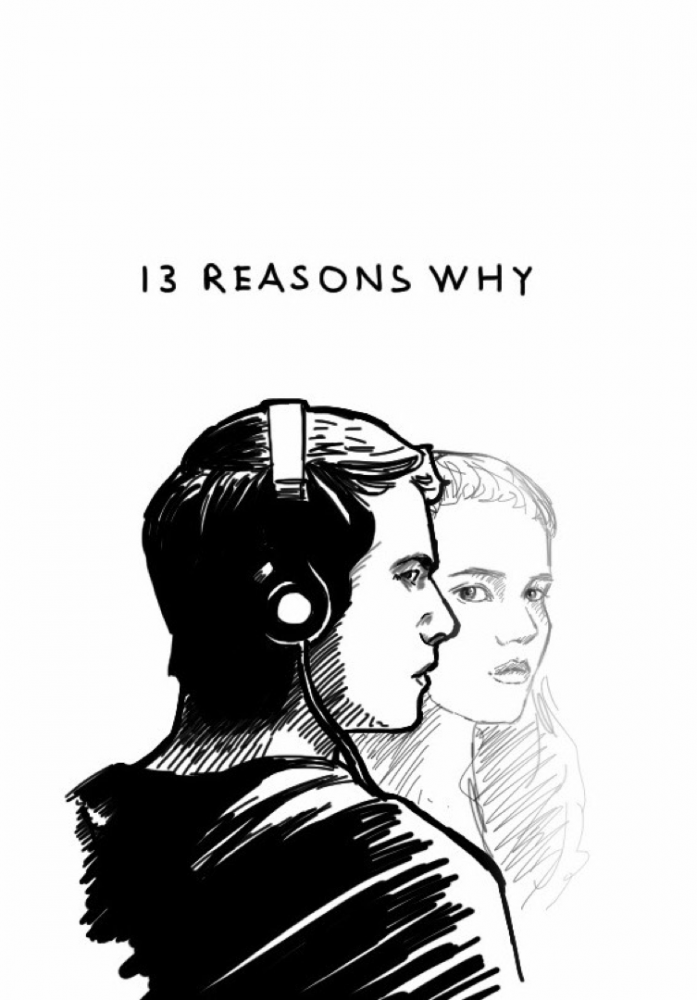13 Reasons Why Not
Thirteen Reasons Why, a Netflix series based on the novel by Jay Asher, is considered controversial because of its portrayal of suicide. The show is about the reaction of various people to the thirteen tapes that 17-year-old Hannah Baker made before she committed suicide. Each of the tapes focuses on one reason that Hannah killed herself and targets one person. The tapes are sent around to each of the people included in the order that they are mentioned. This results in a sort of murder-mystery that culminates in a lawsuit between the parents of Hannah and the local public high school, which Hannah attended until her death.
Many argue that because the series raises awareness of suicide it cannot be problematic, and while that may be partially true, this viewpoint also overlooks many of the show’s faults. Thirteen Reasons Why glamorizes suicide. It makes suicide out to be murder, not a choice made by the person who kills him or herself. It ignores mental illness. Furthermore, the graphic nature of show is problematic as well. While it may be important to show what rape and suicide really look like for some, for those who have actually had experiences with those two things it can be extremely dangerous and traumatic to relive them on a screen. It has been scientifically proven that seeing someone commit suicide, either in real life or on screen, increases both suicide attempts and suicide attempts done in the same way. In simple terms, it is extremely triggering. When I asked one of my friends why she didn’t want to watch the show, she answered that she simply “didn’t think it would be healthy.”
As for the glamorization of suicide: this show is literally telling its audience that after you die everyone will understand that you were right all along, and that they will be sorry. It’s rationalizing suicide as revenge, which takes away the finality of suicide, and that could potentially be harmful for mentally unstable audience members. No good can ever come from a vulnerable, young person seeing suicide as a way to show people that they were treating you badly.
It’s ridiculous to even have to clarify this, but suicide is a choice. It is not murder. In Thirteen Reasons Why, Hannah Baker tells thirteen people that they are the reason that she killed herself; that they murdered her. The school counselor in the show is made out to be a villain because he continuously reiterates that, while Hannah’s death was tragic and terrible, it was also her choice, and nobody else’s fault. And there’s an entire lawsuit between the school and the Bakers over whether the school could have done more to prevent Hannah’s suicide, and exactly who was to blame for Hannah’s death – a death that was completely Hannah’s choice. It’s obvious in the show that the school could have done more, but as a large public high school with limited funding, it’s difficult to single out students and make sure each one is doing alright. In a perfect world that’s what would happen, but realistically, it’s impossible.
Finally, there are no mentions of mental illness in the show. Mental illness is the number one leading cause of suicide around the world, and to completely exclude it from the show is ruling out the possibility that Hannah was hurting on the inside. The show is about the effect your actions can have on other people, but instead of going right to suicide, it should have been very clear that the actions of those thirteen people dragged Hannah into a depression, which, because it was left untreated, resulted in her suicide. Depression killed Hannah. She was not murdered. Terrible things happen to people everyday, everywhere, but not everyone decides to kill themselves. But when terrible things happen to someone who is severely depressed and who doesn’t have a support system, then they might kill themselves, which is what happened to Hannah.
Thirteen Reasons Why had good intentions, but it raised awareness for the wrong things. In order to make the show more exciting the producers and director sacrificed facts– and potentially the health of their audience.







